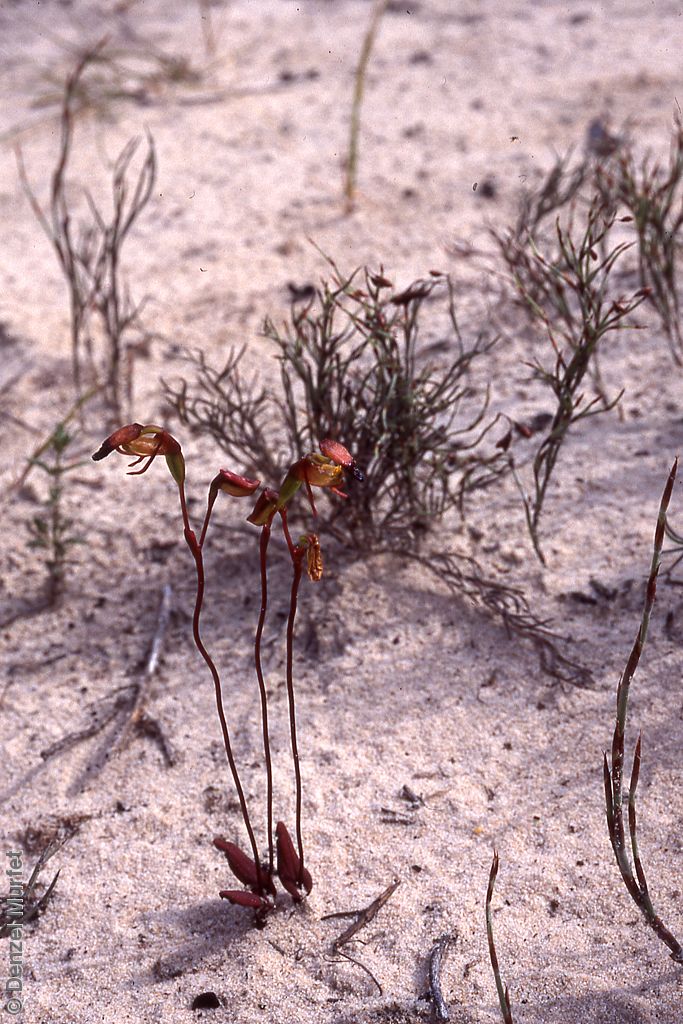
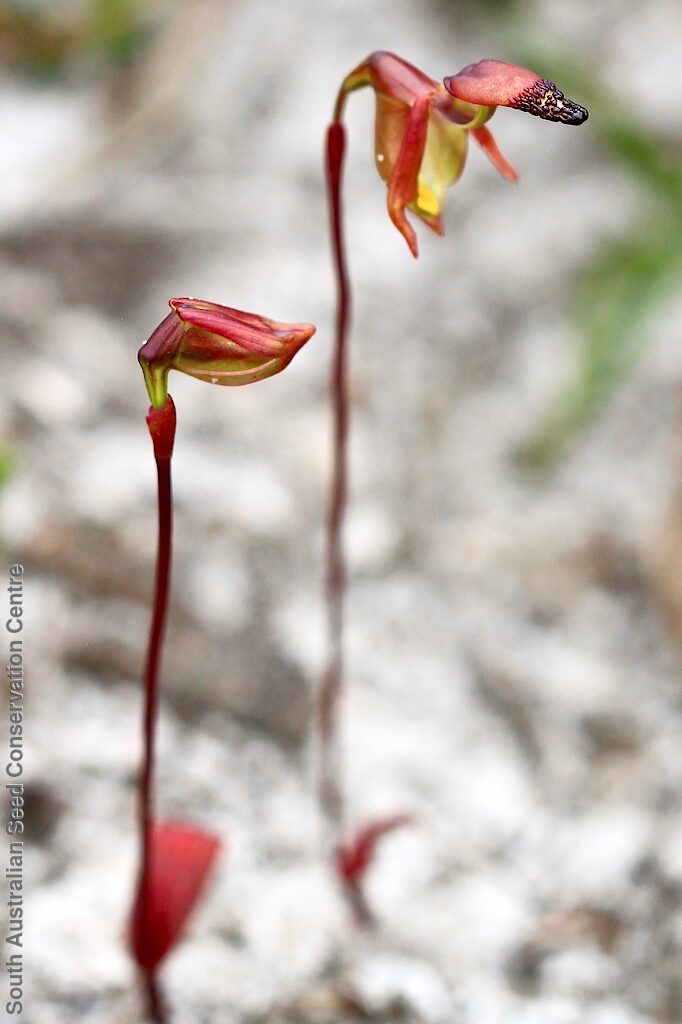
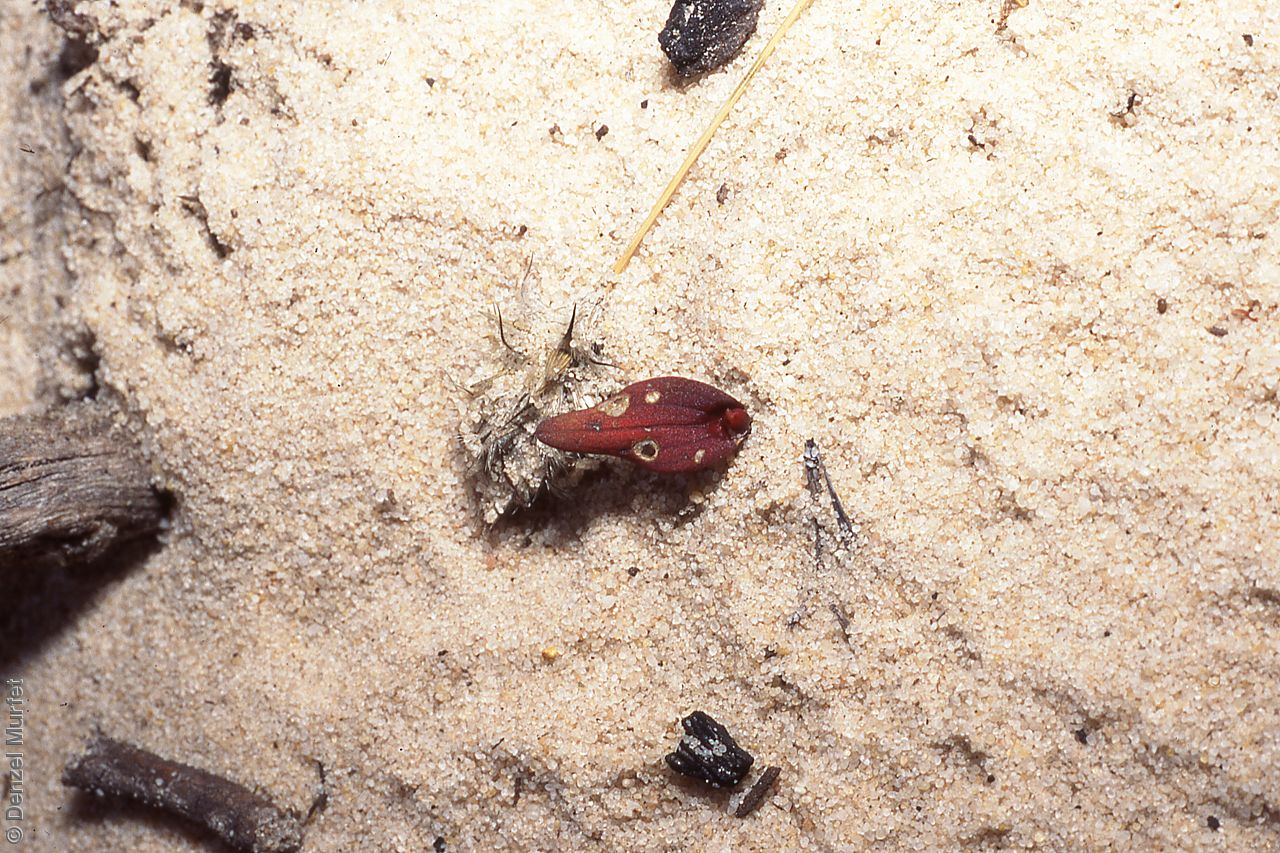
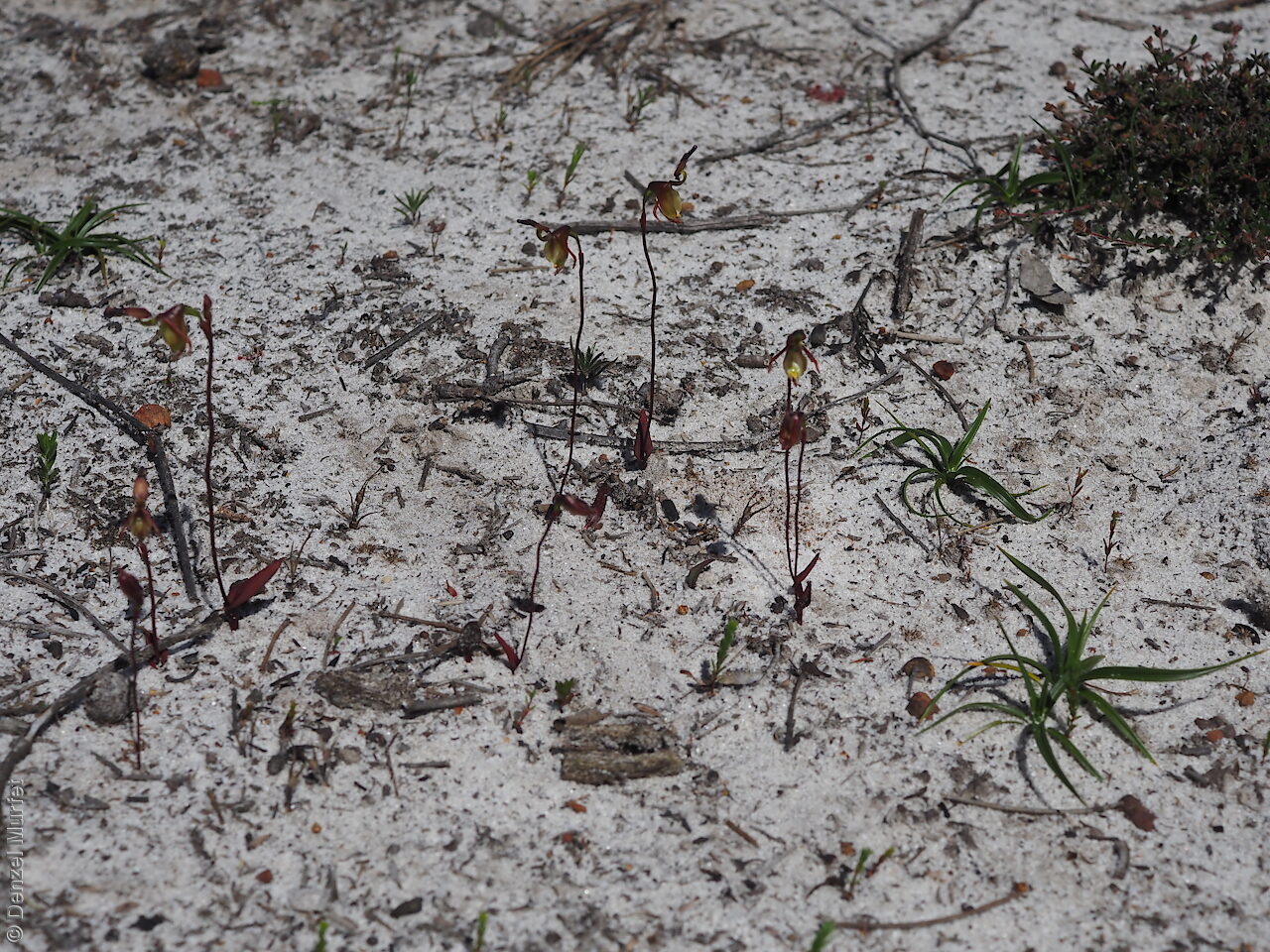
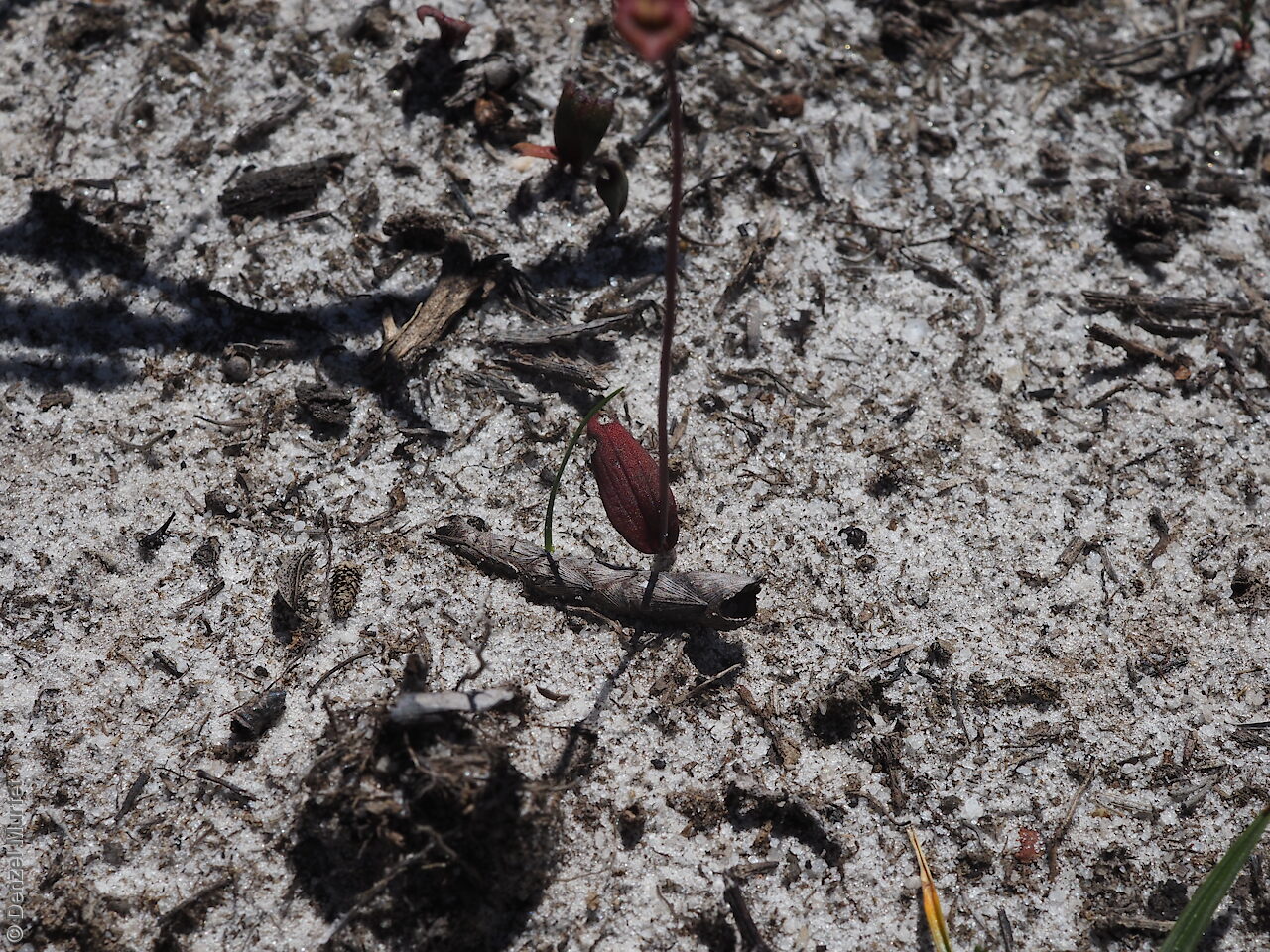
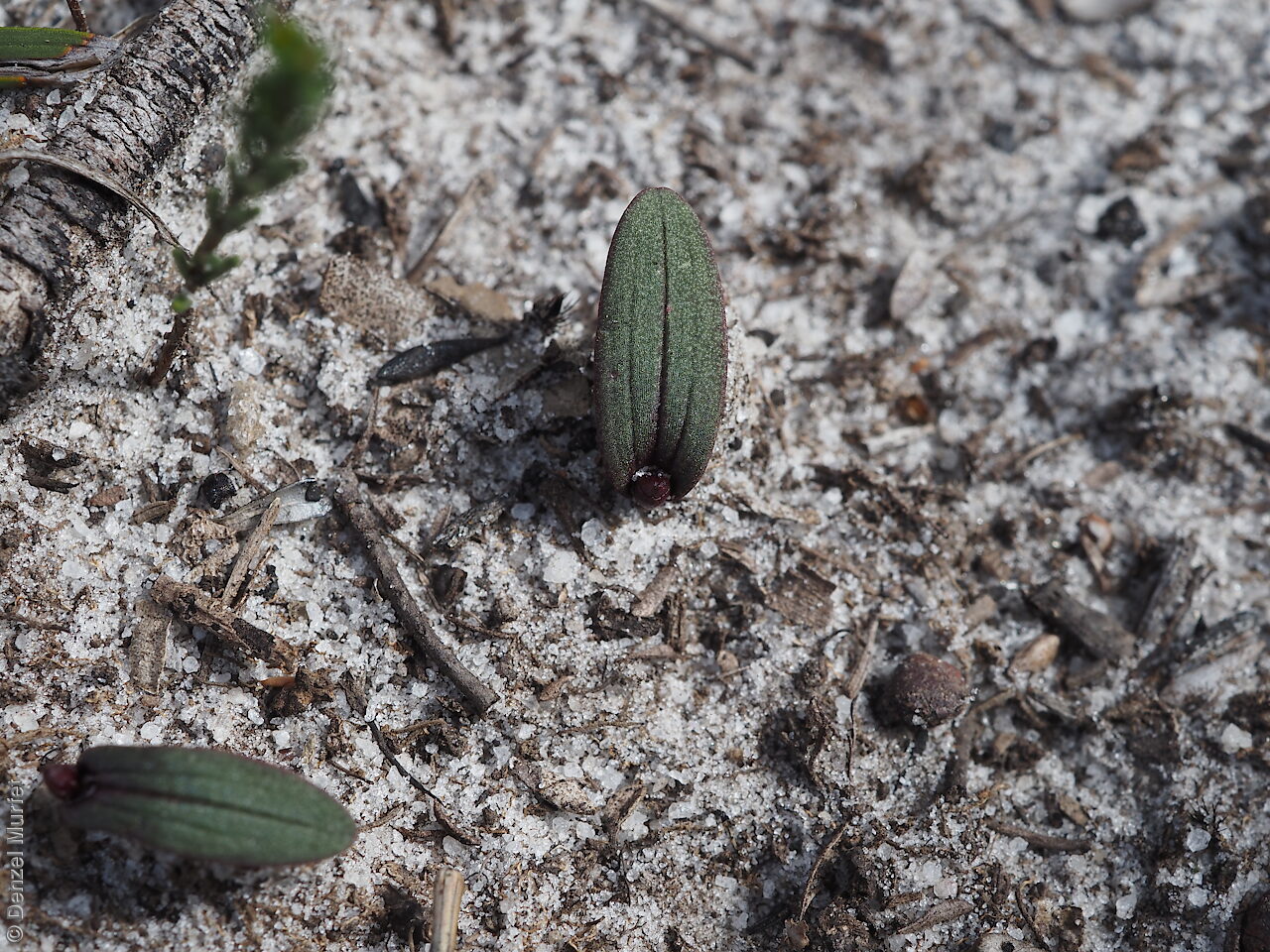
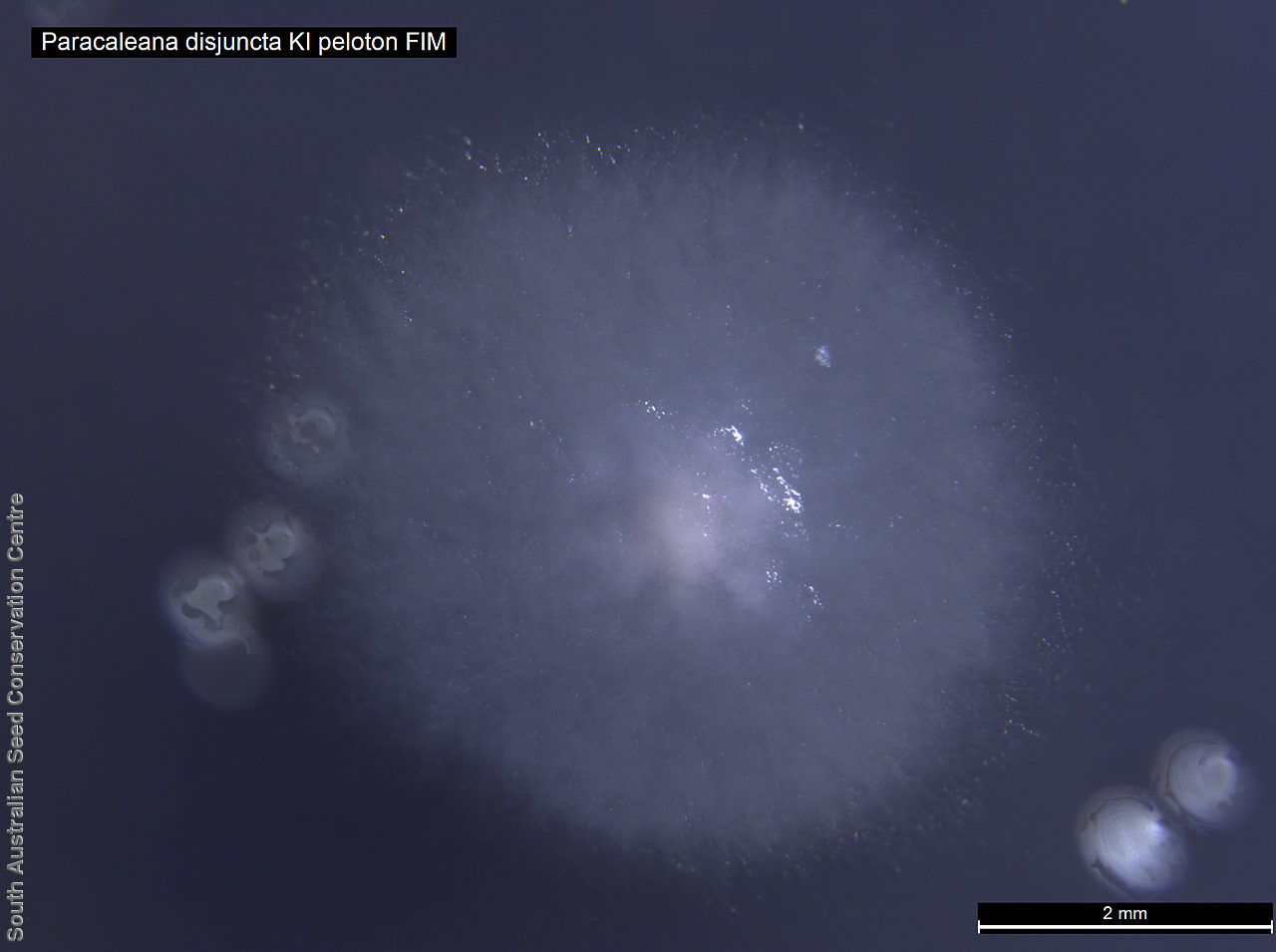
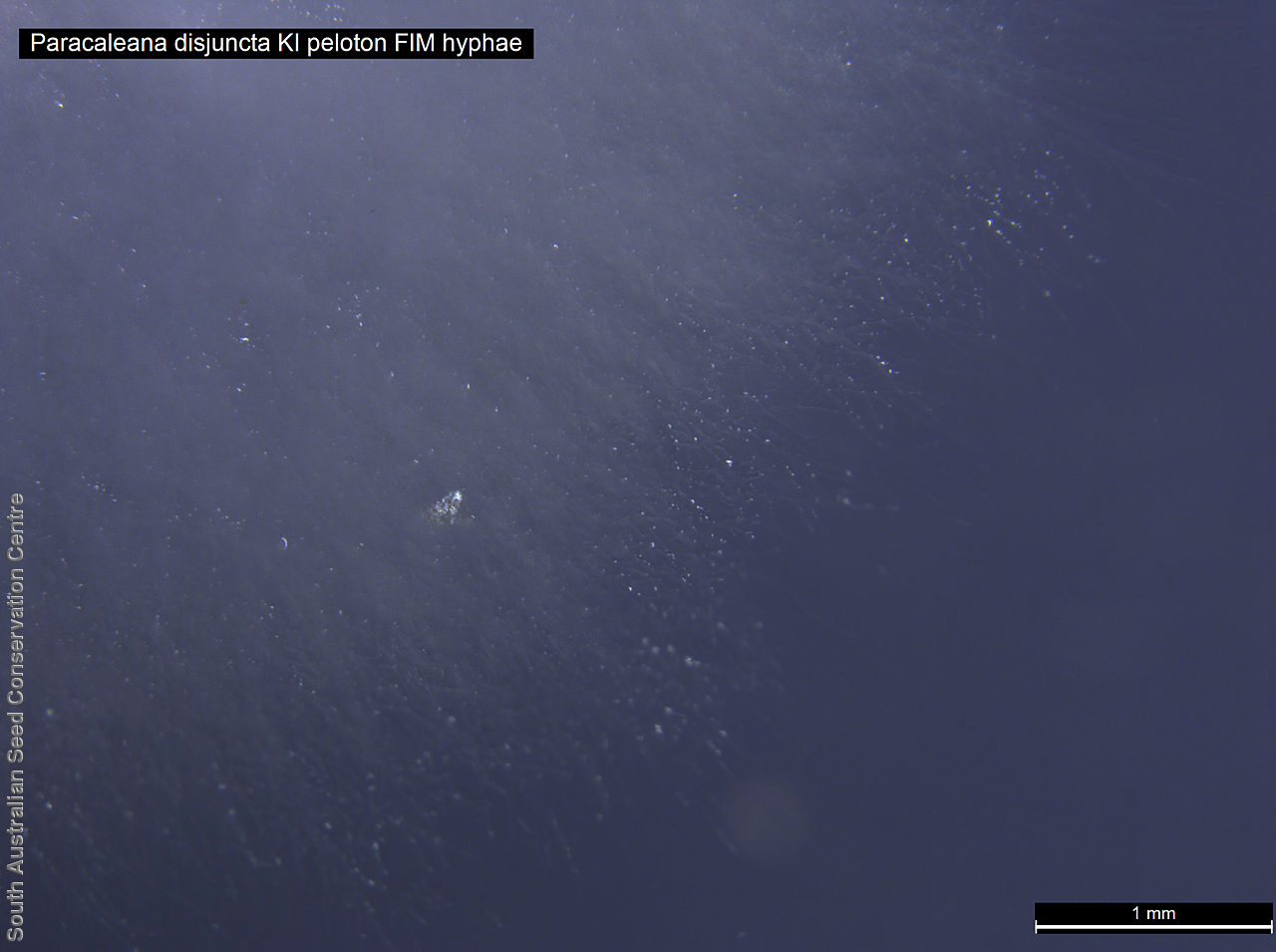
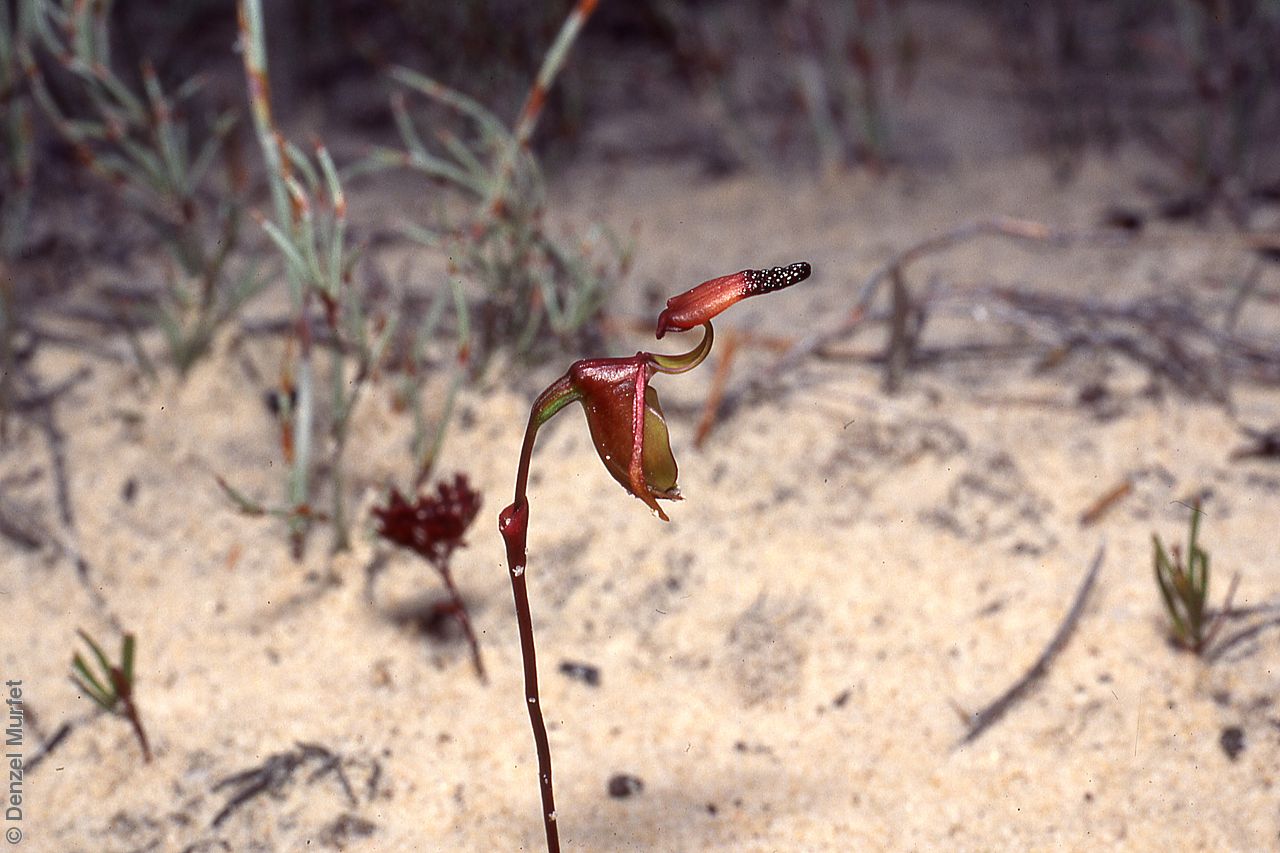
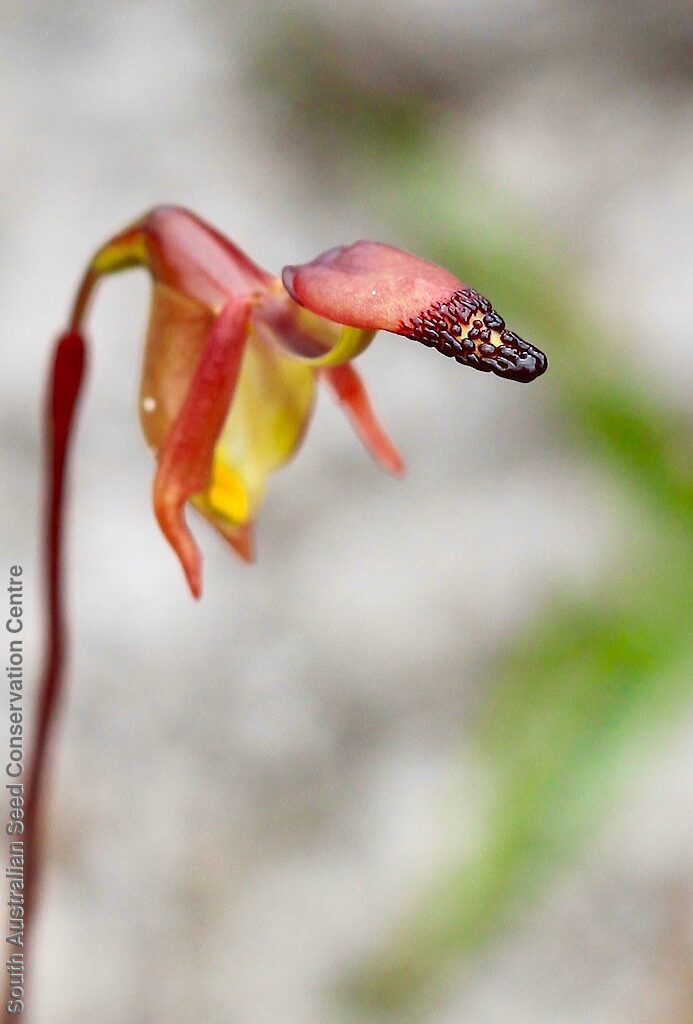
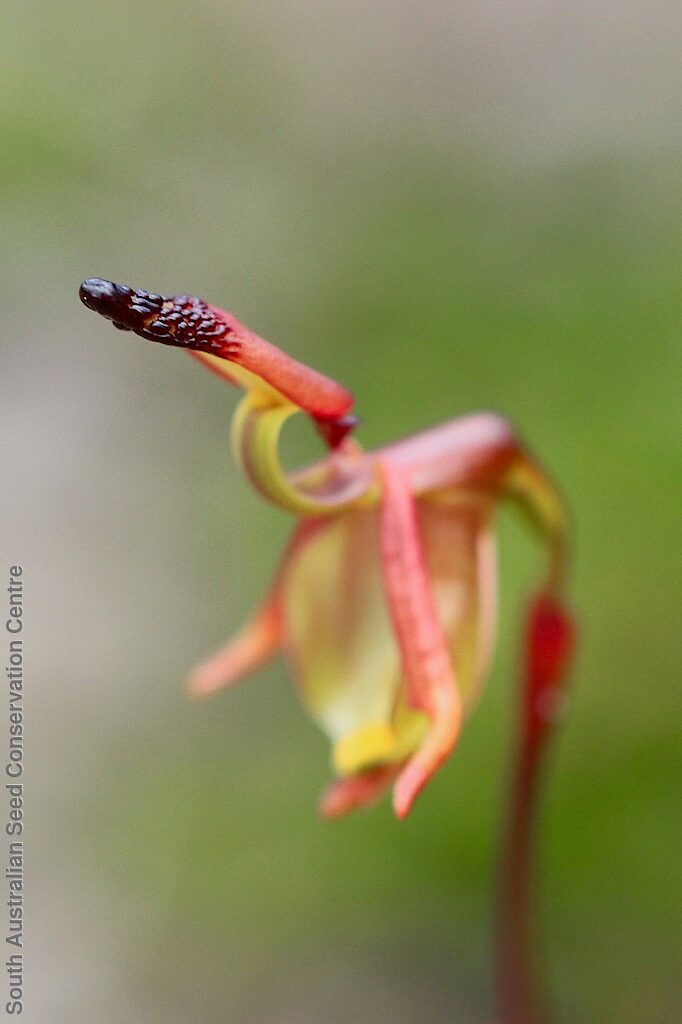
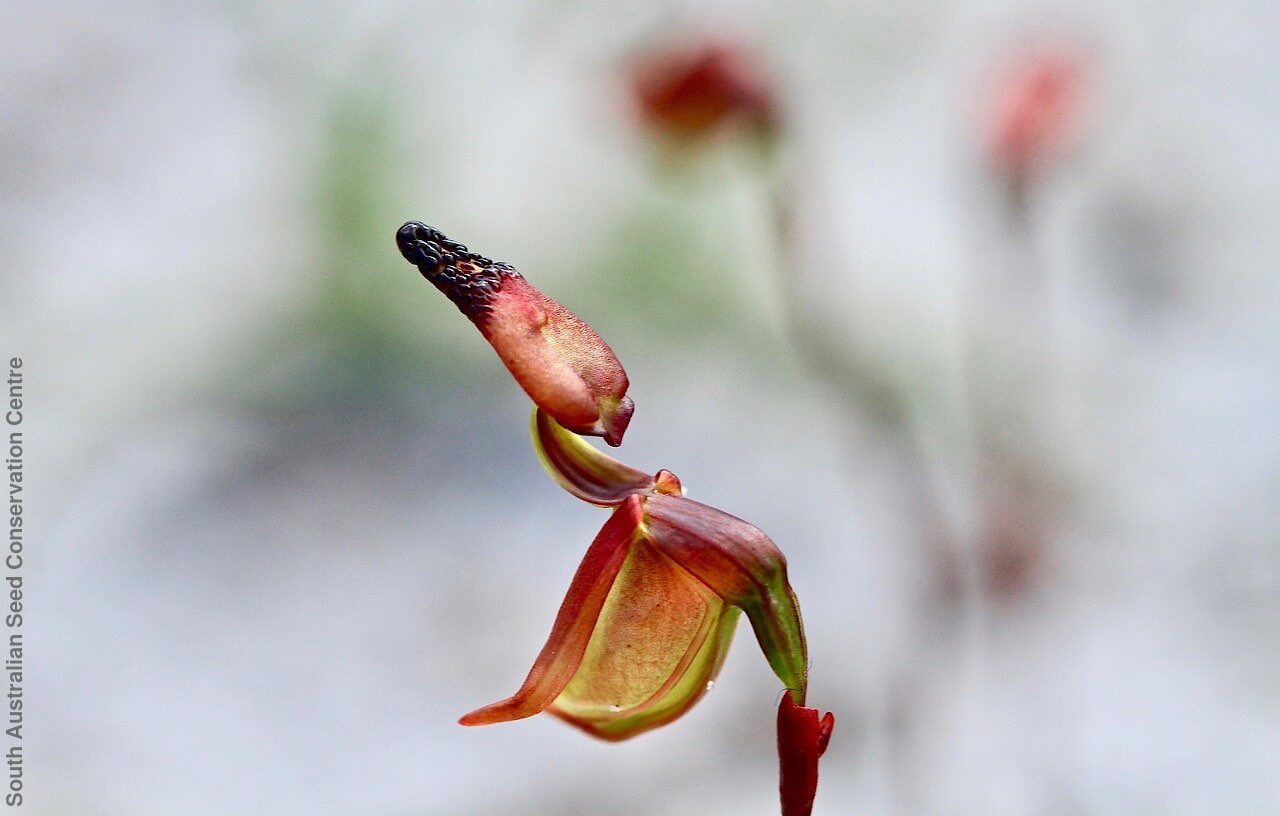
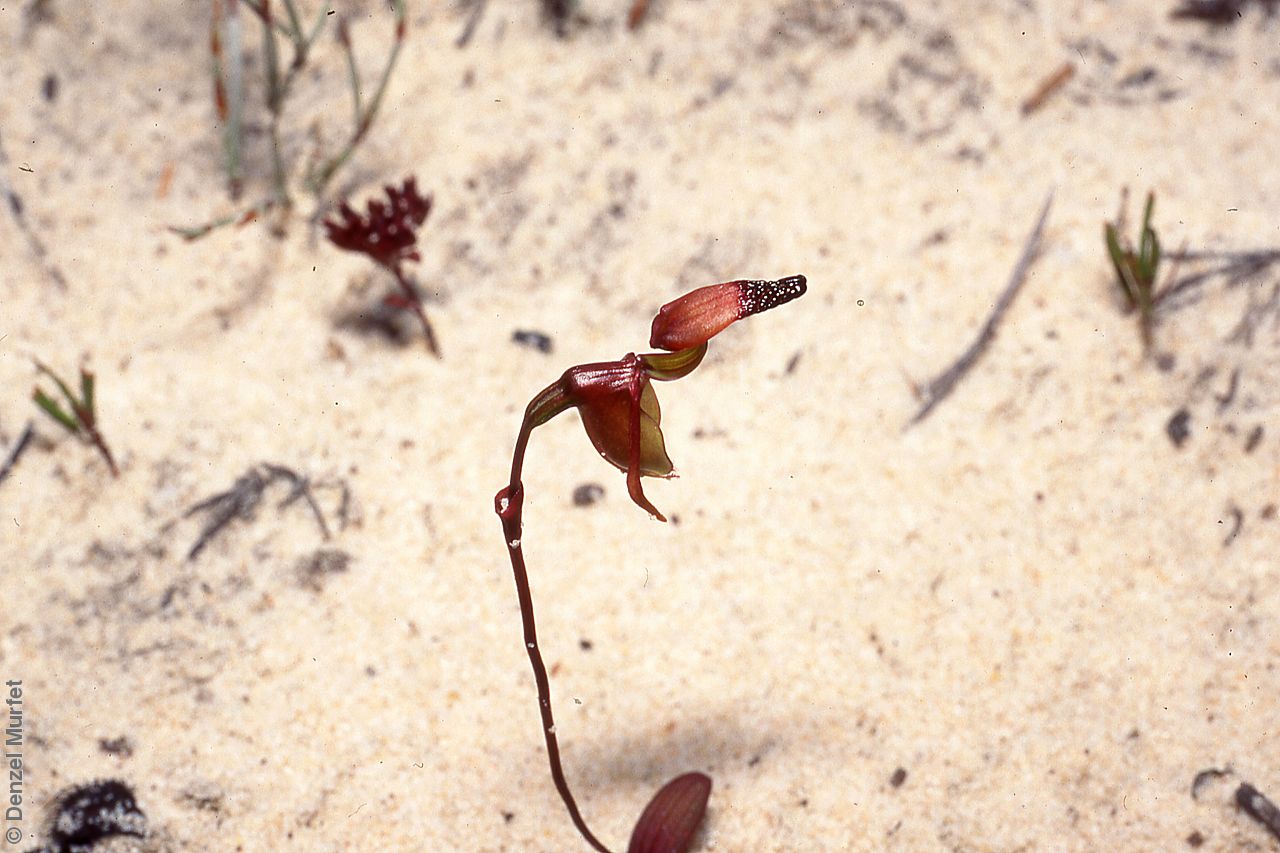
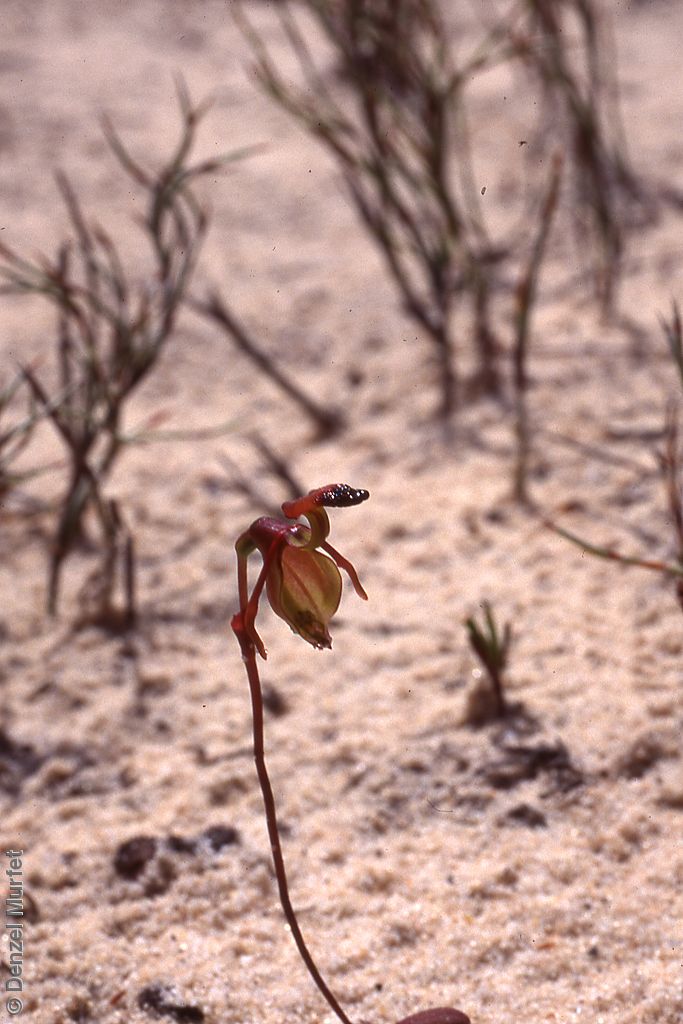
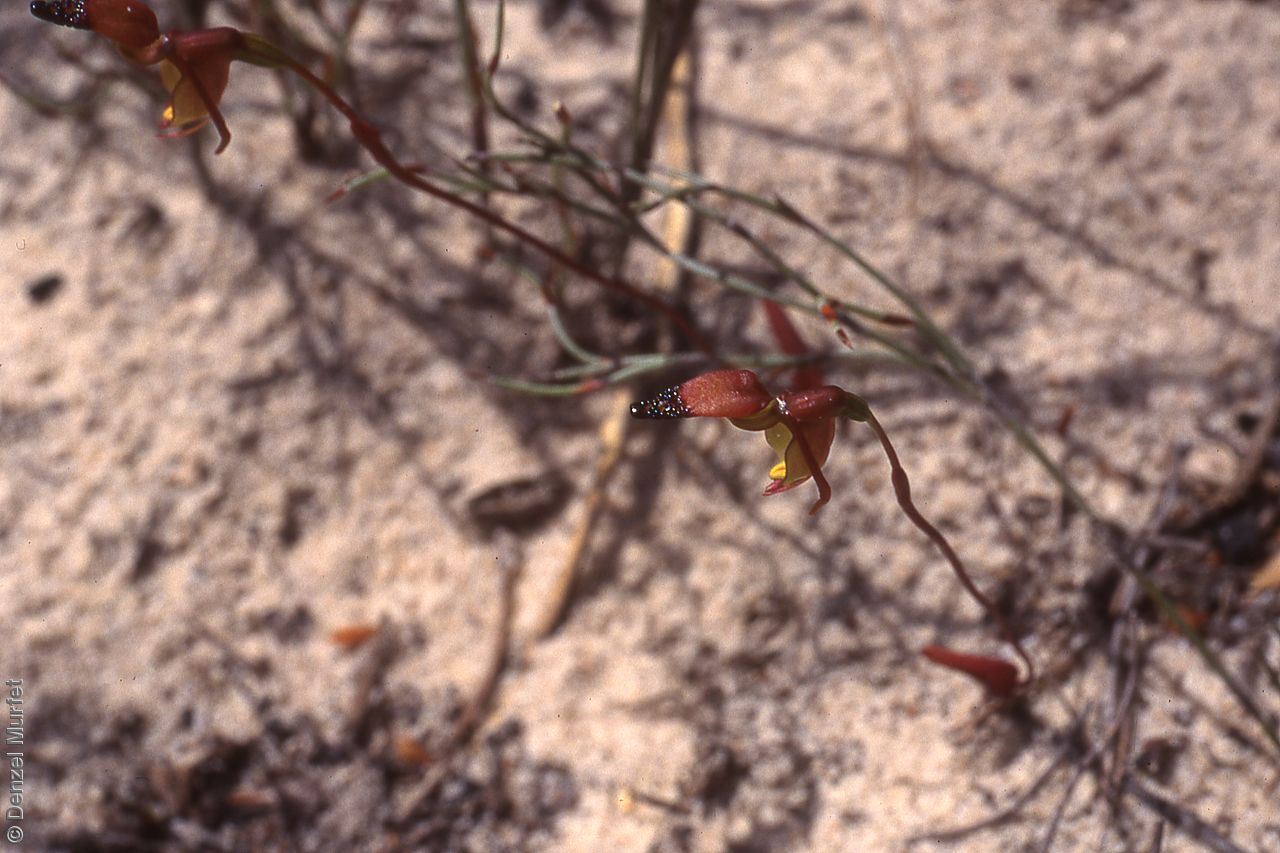
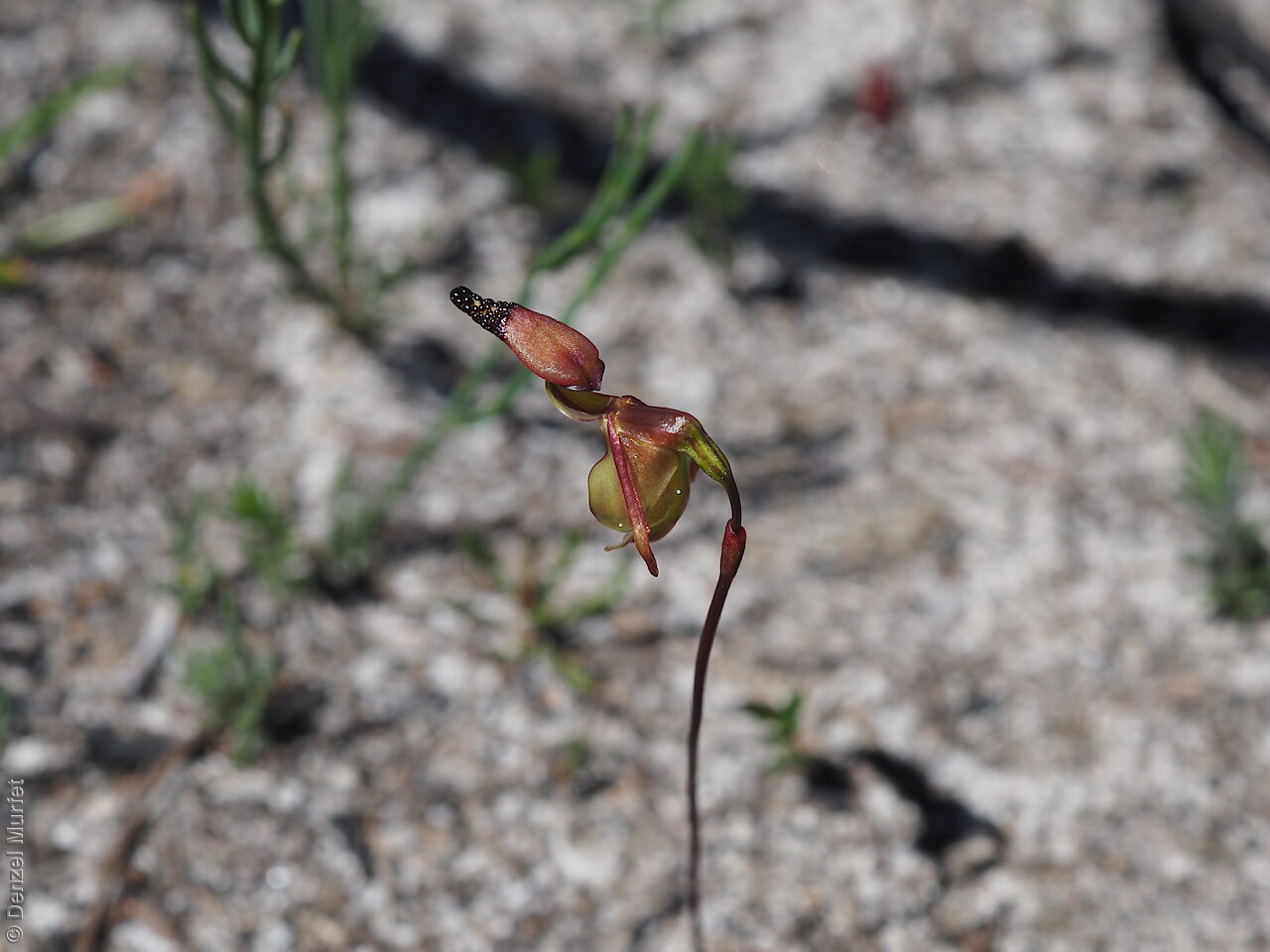
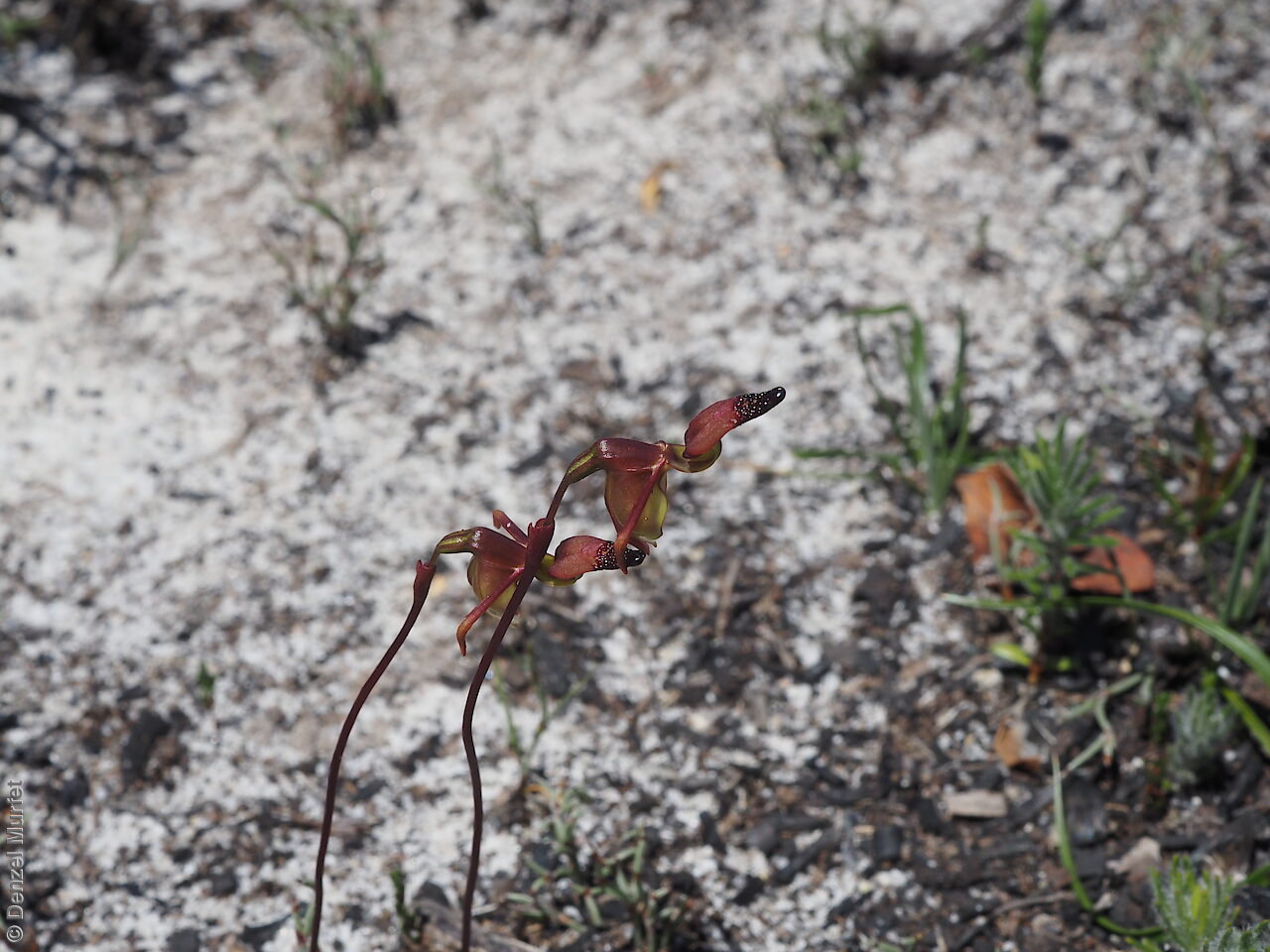
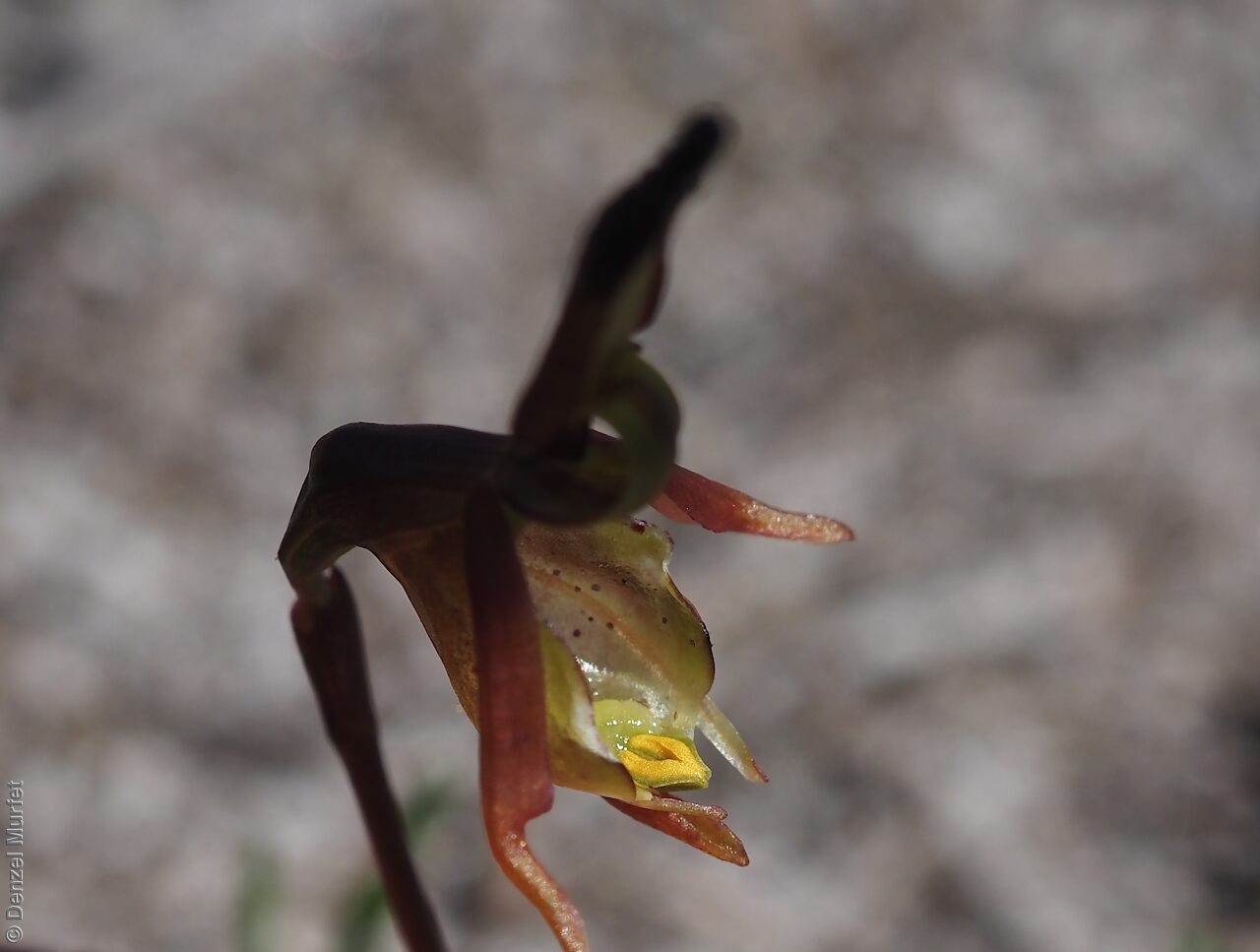
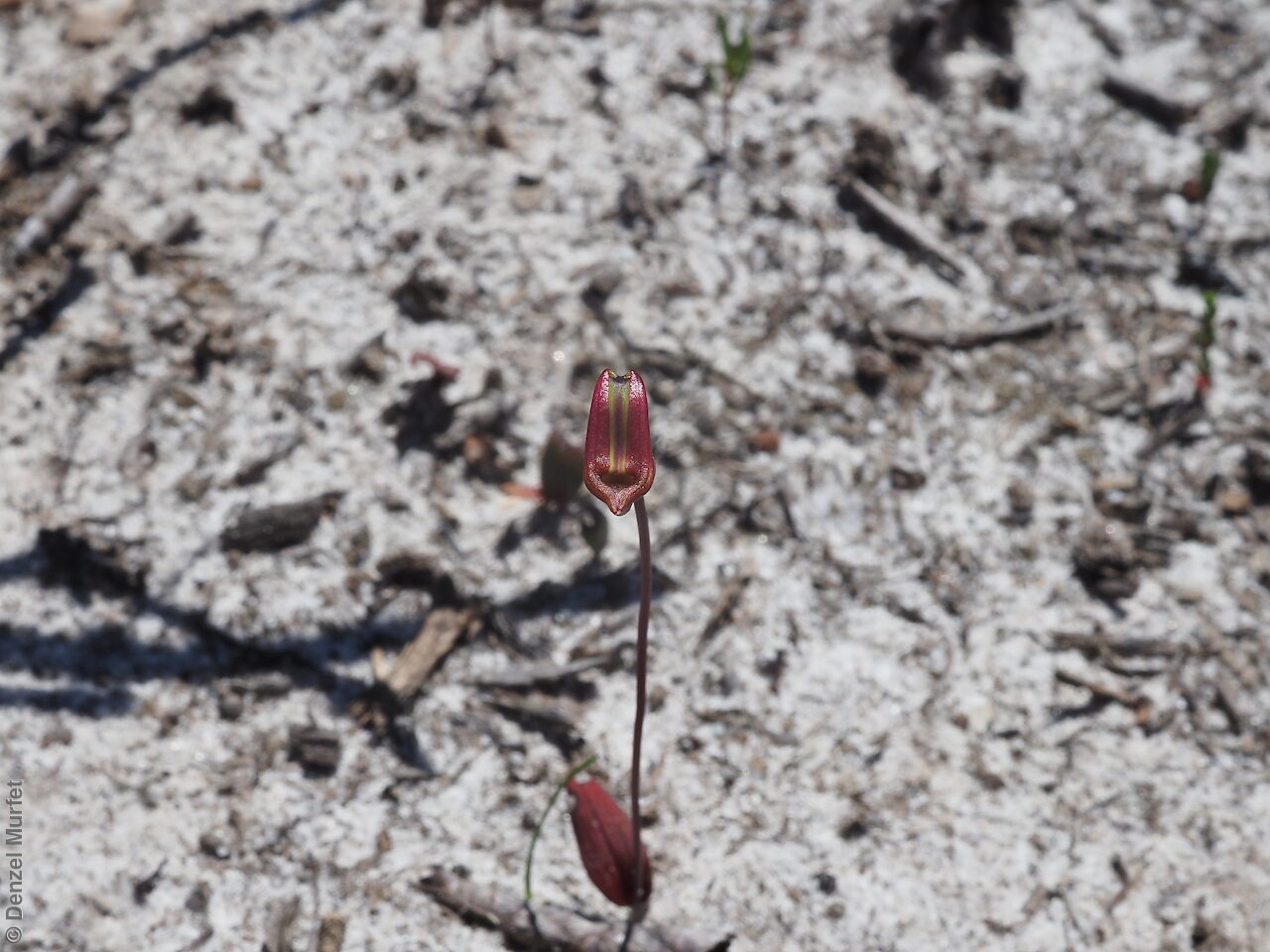
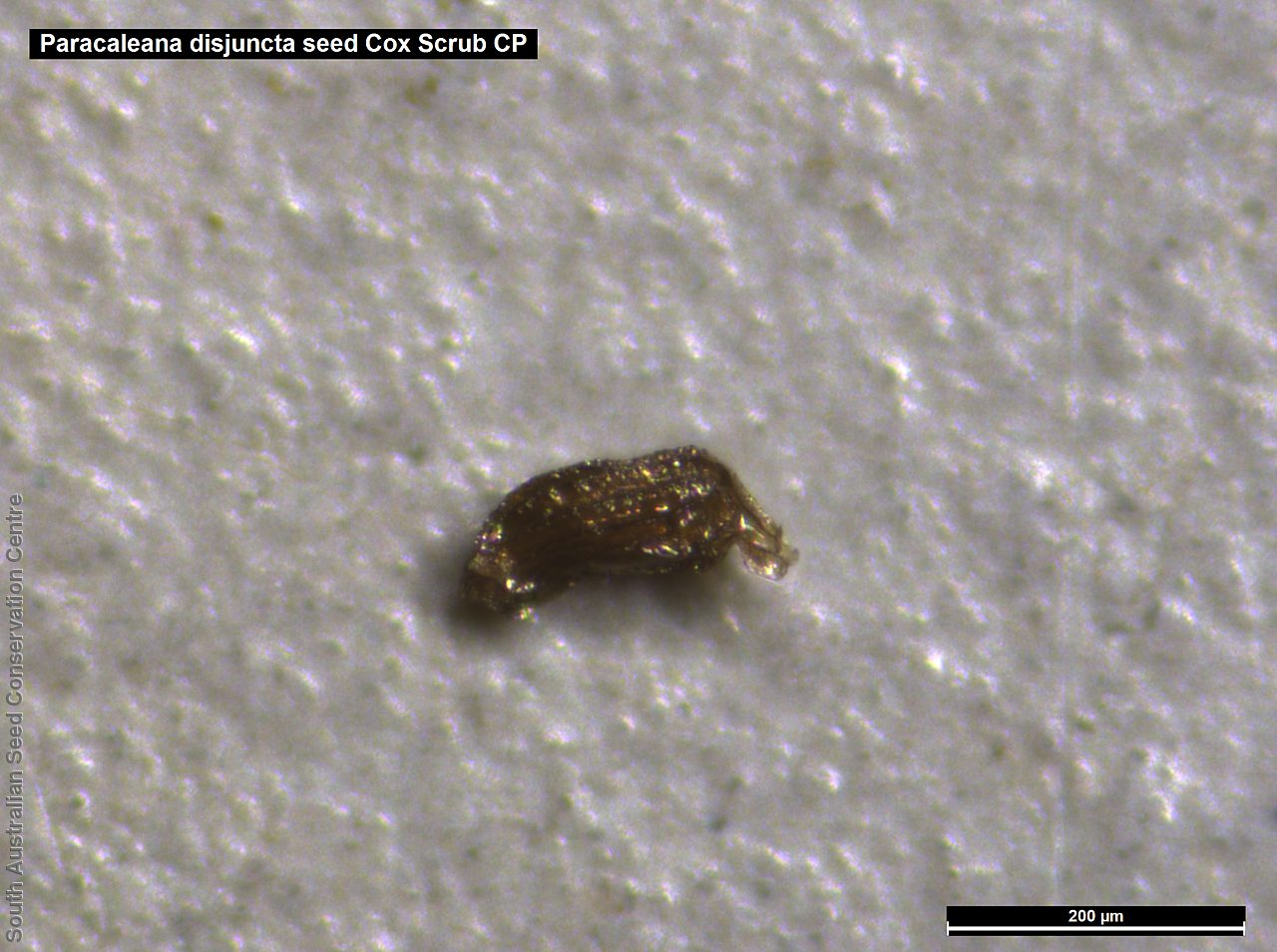
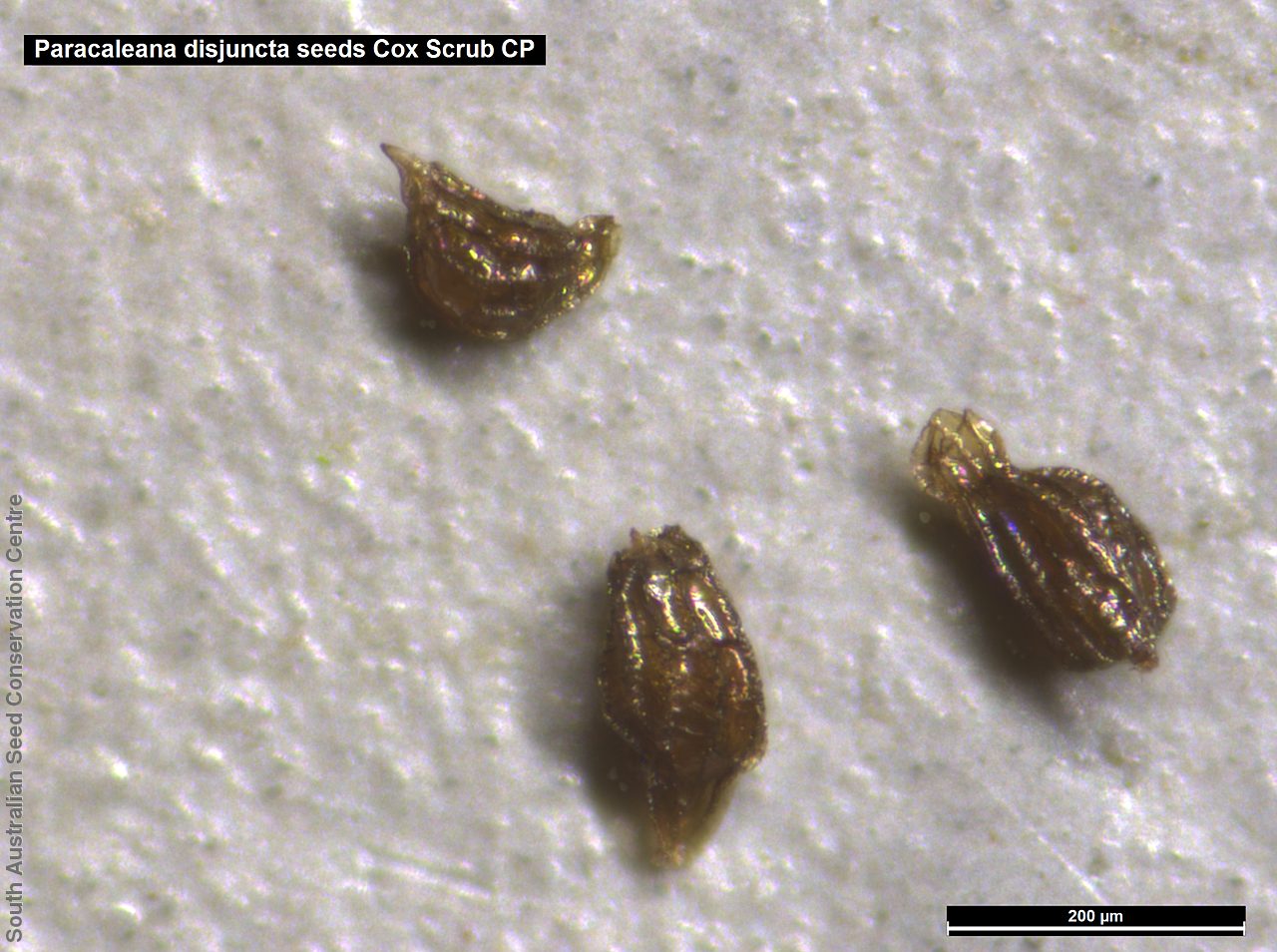
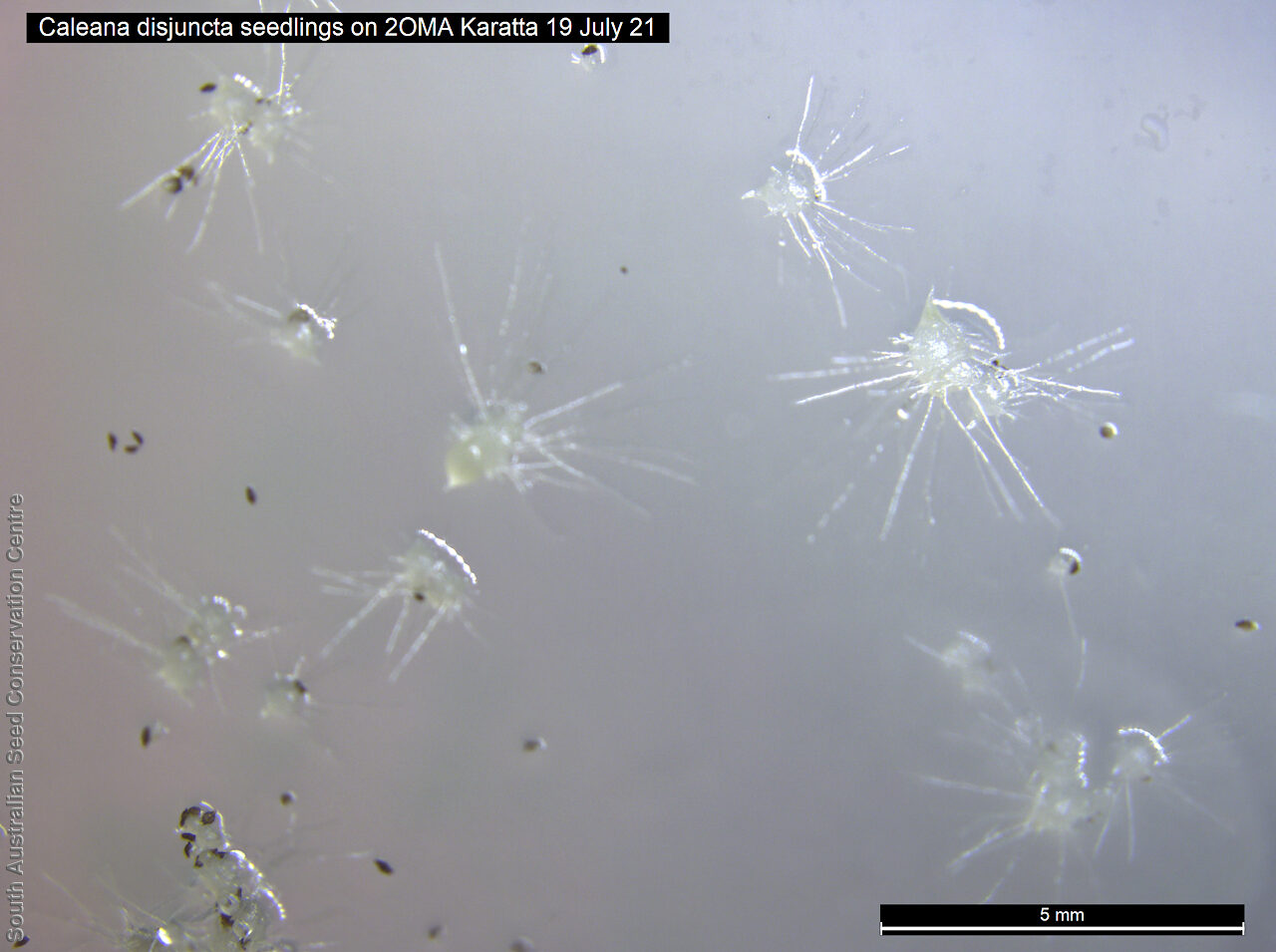
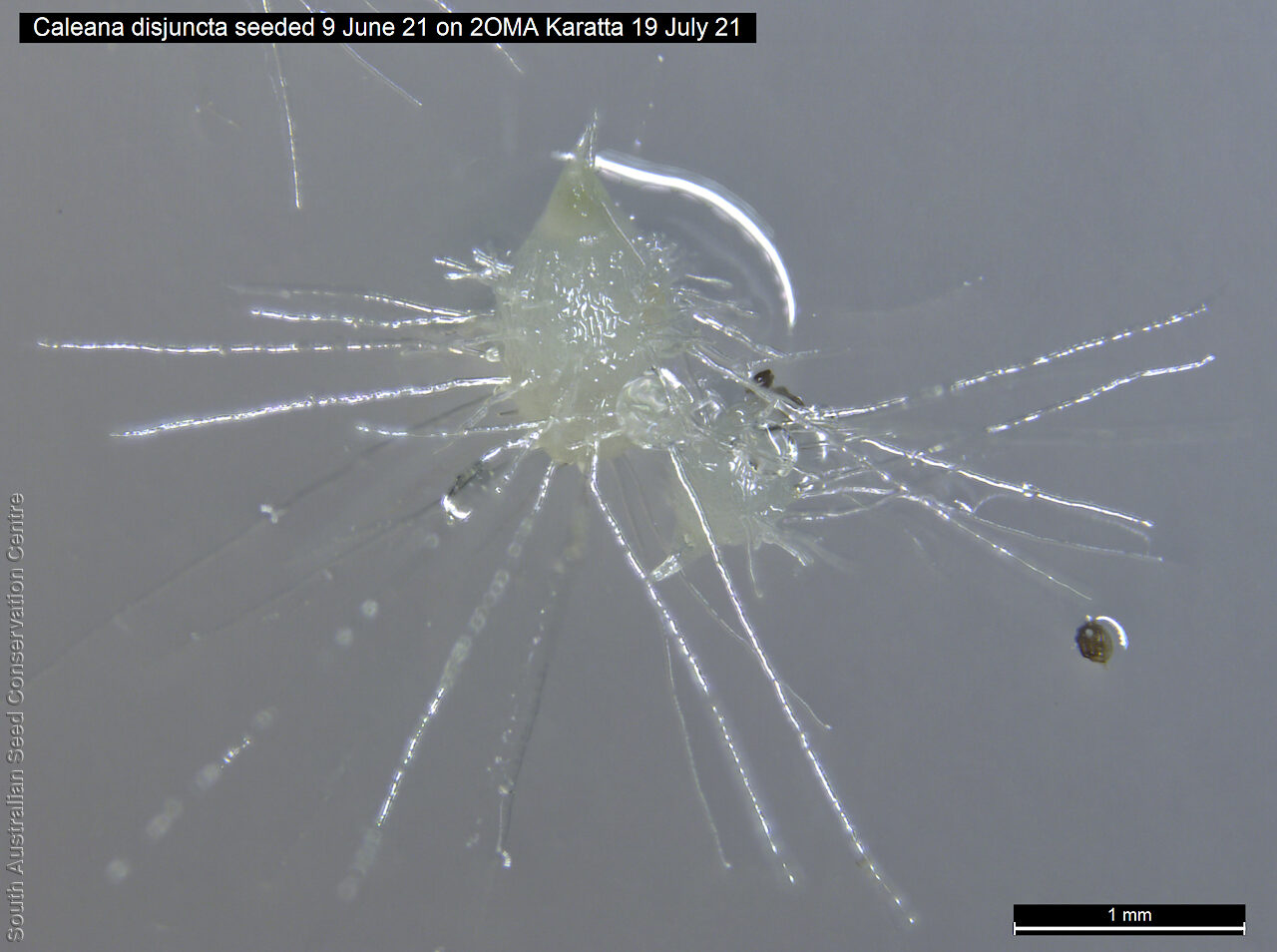
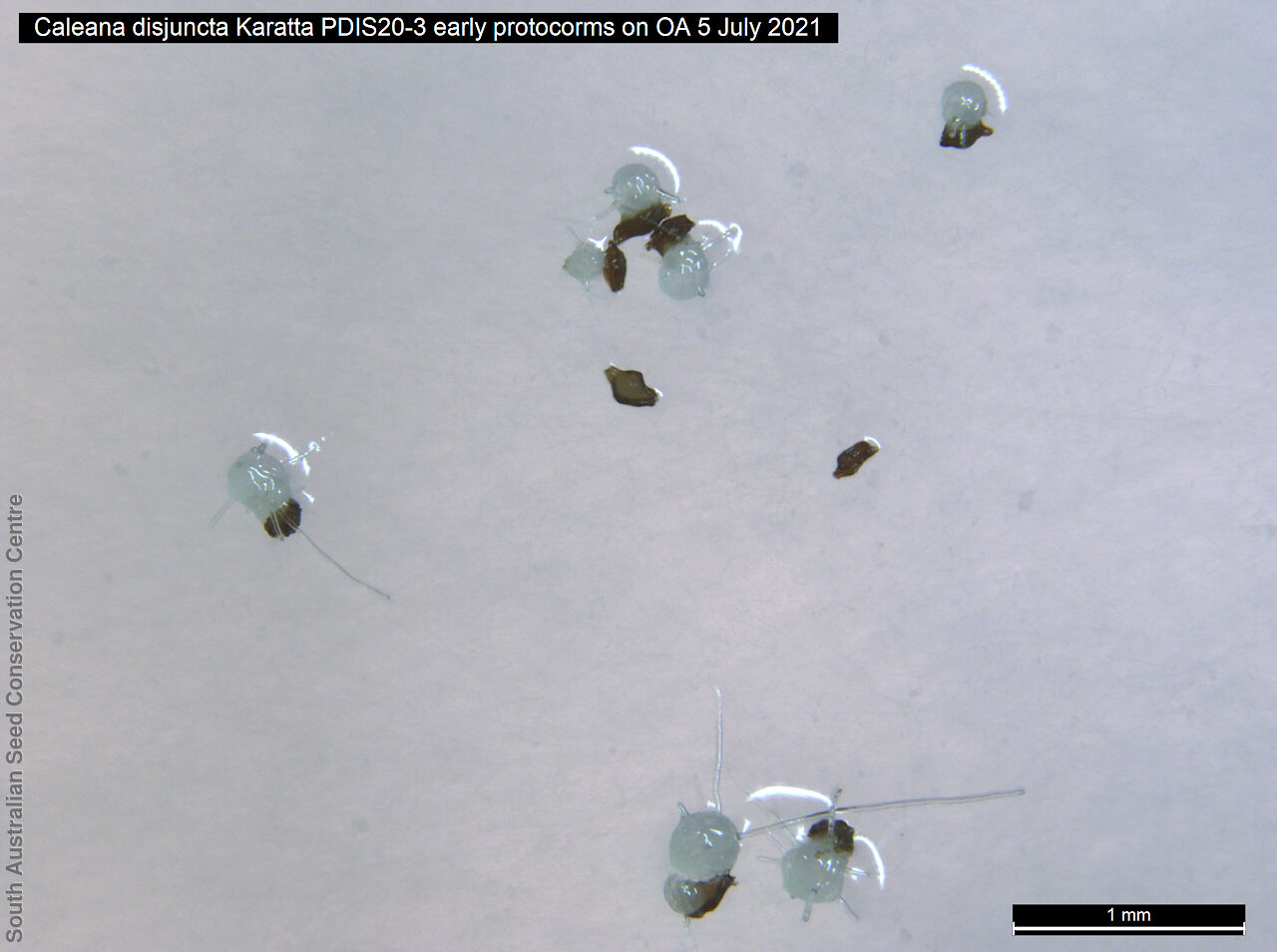
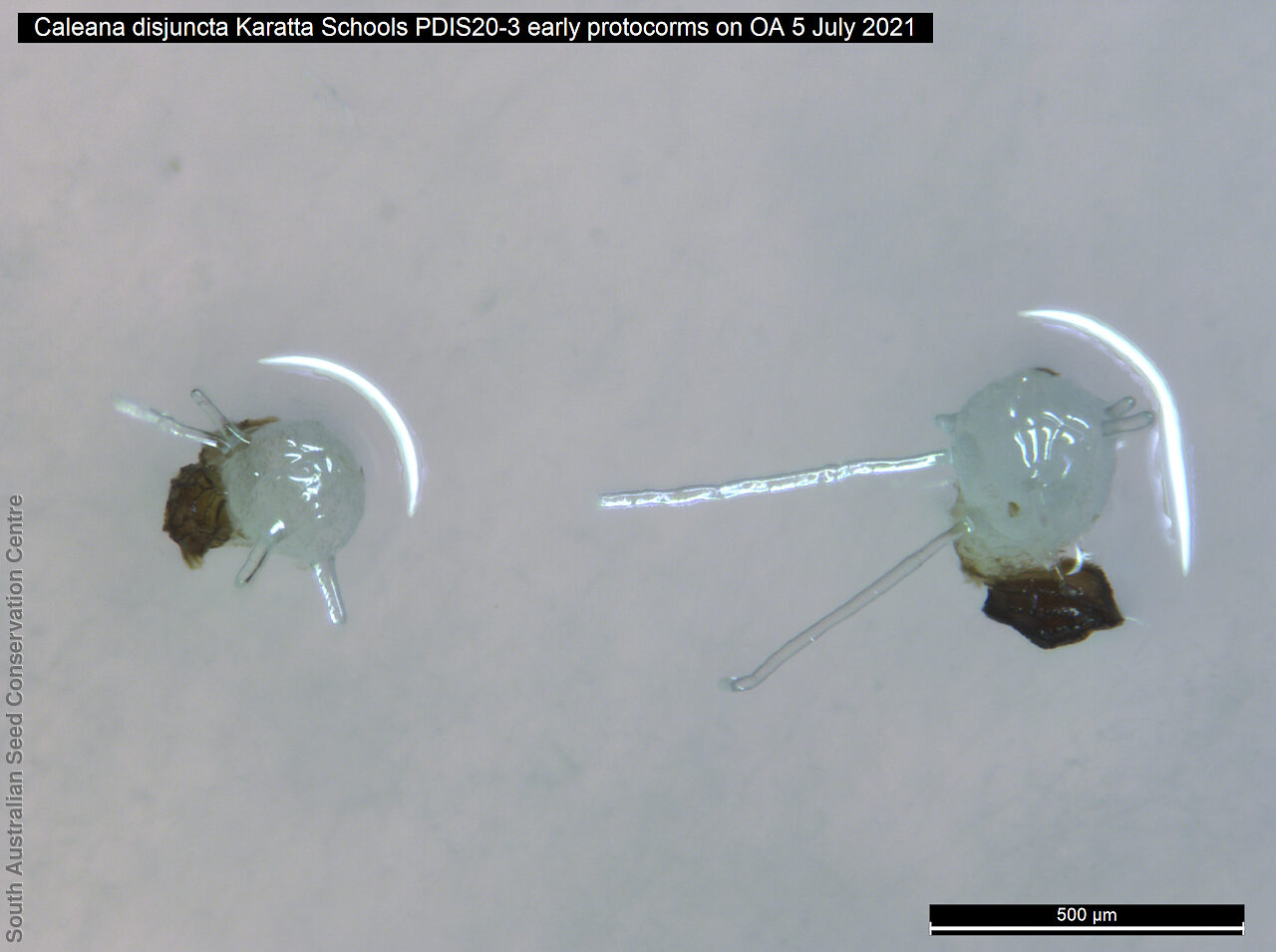
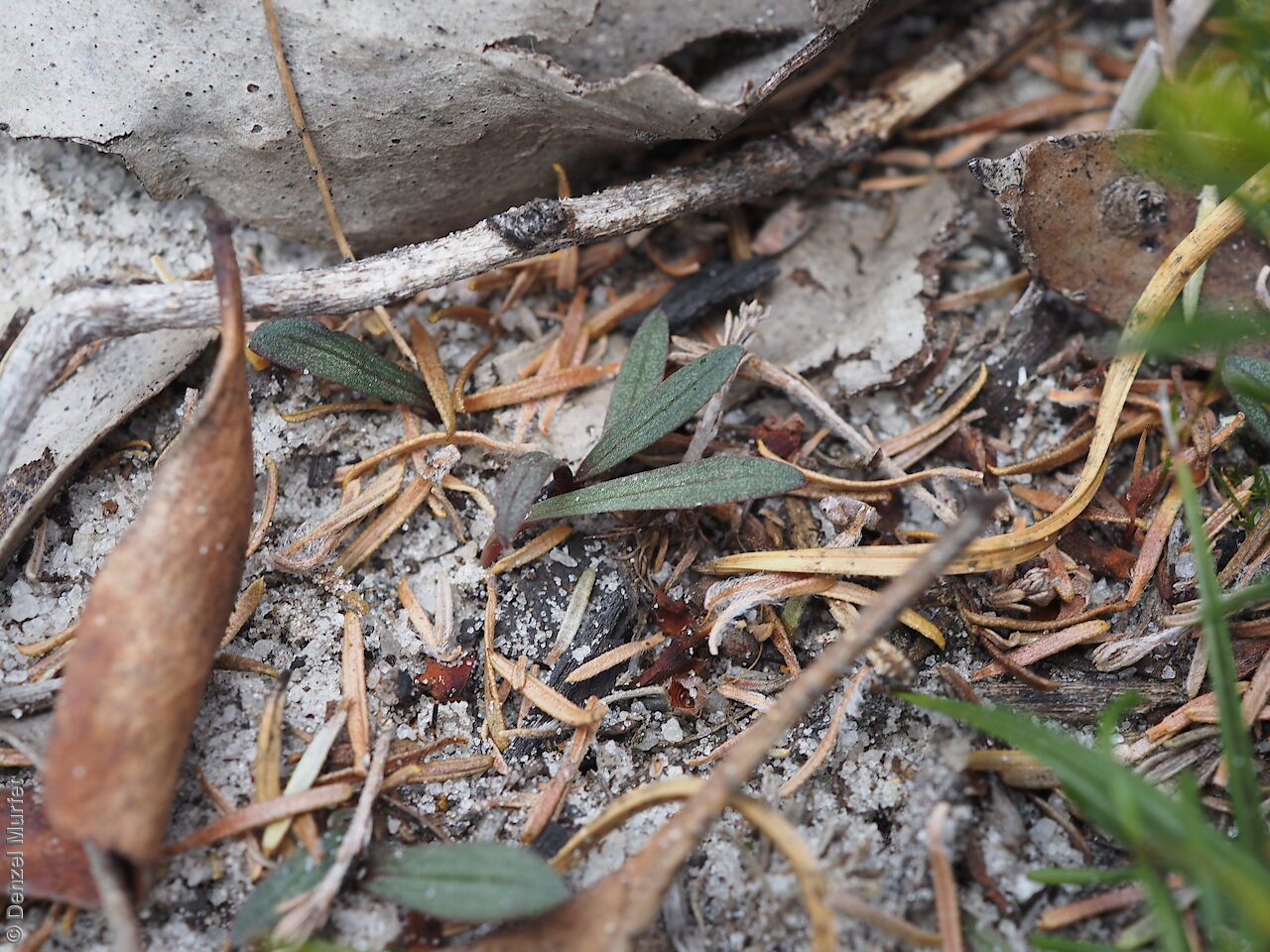

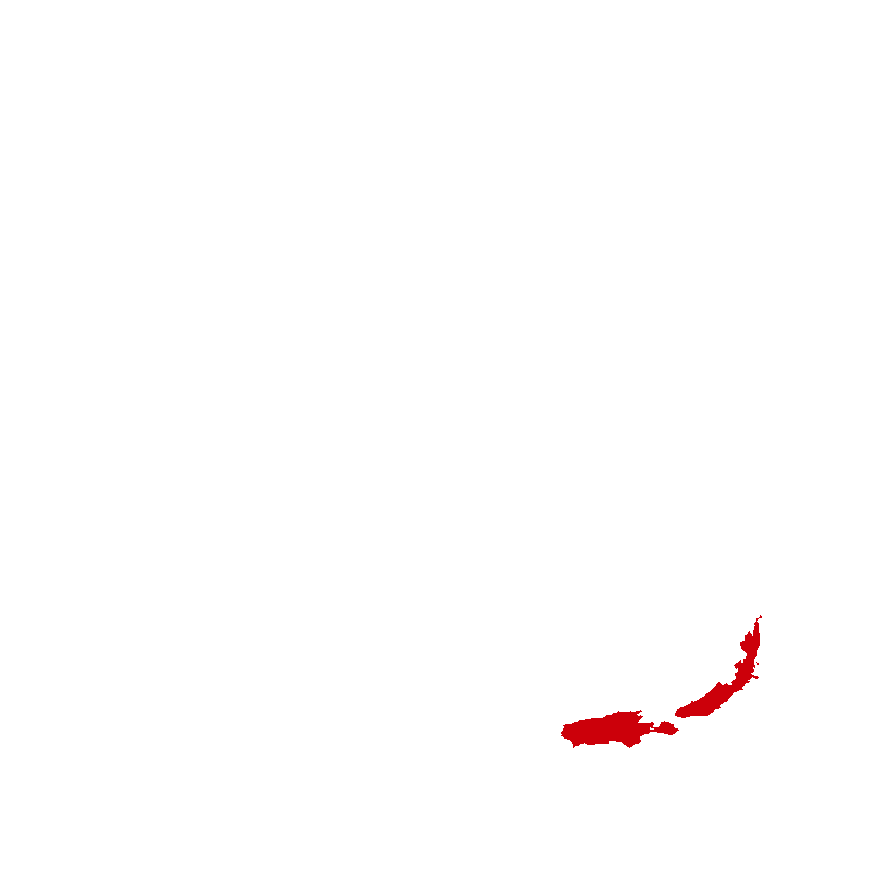
Etymology
Caleana name in honour of George Caley (1770-1829), a British botanist and collector of New South Wales plants, curator of the St. Vincent Botanic Garden, West Indies and a friend of Robert Brown (Formally under Paracaleana from the Greek 'para' meaning near or beside and 'Caleana' another genus of the Orchidaceae, referring to its similarity to the genus Caleana). Disjuncta from Latin meaning separate or remote, referring to the widely separated populations of this orchid.
Distribution and status
Found on Kangaroo Island and the Fleurieu Peninsula in South Australia, growing in well-drained sandy soil in wet depression in heathy woodland. Also found in Victoria and Western Australia. Native. Very rare in South Australia. Very rare in Victoria. Common in Western Australia.
Herbarium regions: Southern Lofty, Kangaroo Island
NRM regions: Adelaide and Mount Lofty Ranges, Kangaroo Island
AVH map: SA distribution map (external link)
Plant description
Annual terrestrial orchid growing to 15 cm tall in flower with a single ovate leaf to 2 cm long and 10 mm wide, green above, purplish below. Flower usually solitary, yellowish-green to reddish-brown with profile resembles a duck. Flowering between October and November. Fruits are brown papery ellipsoid capsule. Seeds are very small orange-brown ellipsoid seed with a long cylindrical translucent brown mesh-like covering.
Seed collection and propagation
Collect seeds between November and December. Collect fat capsules as they start to dry and turn brown. Pods will split and release the seeds quickly and will require monitoring. To increase the chances of collecting mature pods, it is recommended that a small breathable bag (ie. Organza bags) be used to enclose the developing capsules. Place the capsules in a container that will hold fine seeds and leave to dry for a few weeks or until the capsule split. Then carefully hold the capsule and tap it gently to release the seeds. Store the seeds with a desiccant such as dried silica beads or dry rice, in an air tight container in a cool and dry place, refrigerator or in liquid nitrogen. More research is needed to understand the seed germination requirements of Caleana species. Seed germination in orchid species is difficult in the absence of symbiotic mycorrhizal fungi.
Fire response
Obligate re-spouter and re-seeder.
Longevity: ?? years
Time to flowering: 1 years
Recovery work
In 2020-2021 this species was assessed post-fire in 1 year old fire scars. A total of 966,200 seeds have been collected & banked for 2 populations inside the 2020 fire scar. Germination screening testing the response to fire cues will be undertaken in 2021. The project work is supported by John T. Reid Foundation.
| Location | No. of seeds (weight grams) | Number of plants | Date collected | Collection number Collection location | Date stored | % Viability | Storage temperature |
|---|---|---|---|---|---|---|---|
| BGA | 18,400 (0.004 g) | 2 | 26-Nov-2020 | T.Bridle Southern Lofty | 28-Jun-2021 | N/C | -18°C |
| BGA | 487,500 (0.094 g) | 24 | 26-Nov-2020 | JRG743 Kangaroo Island | 28-Jun-2021 | N/C | -18°C |
| BGA | 478,700 (0.092 g) | 30 | 26-Nov-2020 | DJD3911 Kangaroo Island | 28-Jun-2021 | N/C | -18°C |
| BGA | 45,500 (0.009 g) | 11 | 4-Jan-2022 | JRG841 Kangaroo Island | 10-Aug-2022 | N/C | -18°C |
Number of plants: This is the number of plants from which the seeds were collected.
Collection location: The Herbarium of South Australia's region name.
% Viability: Percentage of filled healthy seeds determined by a cut test or x-ray.